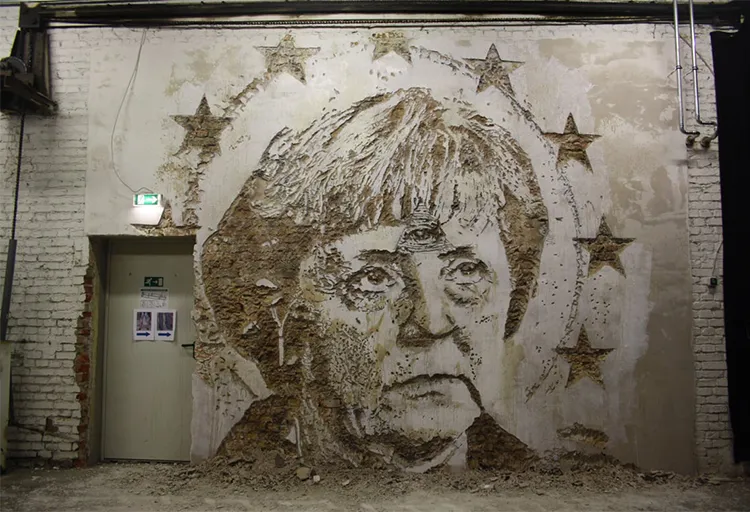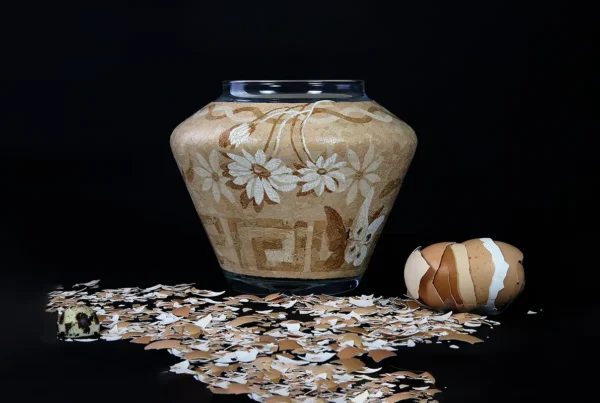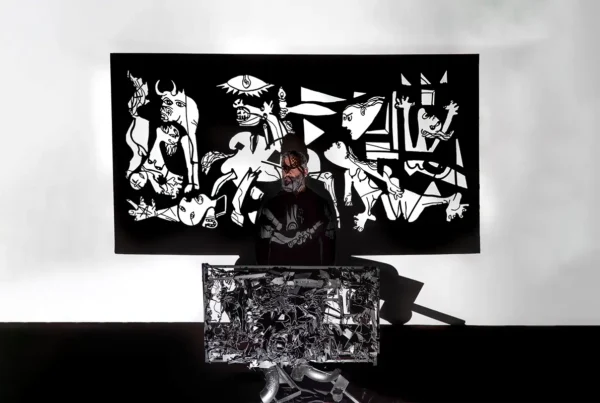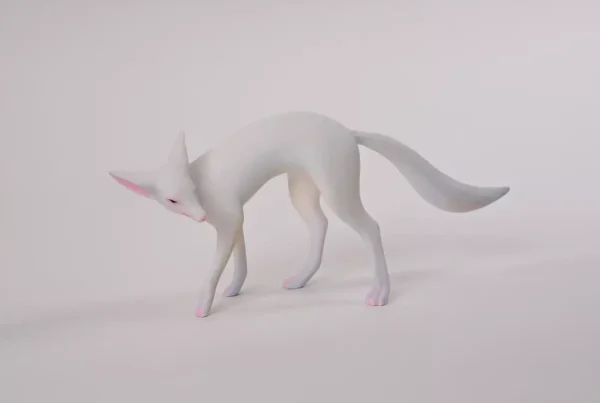The Origins of a Rebellious Canvas
In the early 2000s, Alexandre Farto, known globally by his pseudonym Vhils, began his artistic journey through the dynamic world of graffiti. This initial foray into urban art was not merely a rebellious act of expression but a formative experience that laid the foundation for his future work. Graffiti allowed Farto to interact with the city in a way that transcended conventional artistic mediums, embedding his creativity into the urban landscape itself. Over time, this engagement with the urban environment evolved into a profound exploration of the city’s physical and metaphorical layers. Through graffiti, Farto developed a fascination with uncovering these layers, a curiosity that would come to define his distinctive approach to art.
As Farto’s work progressed, he moved beyond traditional graffiti, developing a technique that involves the removal of surface layers to reveal the hidden textures beneath. This approach is not just a method but a philosophy—one that sees destruction as a form of creation. Farto’s technique, often likened to an archaeologist uncovering the past, reflects his belief that the layers of a city mirror the layers of human experience. By stripping away the surface, he reveals the complex histories and identities that lie beneath, inviting viewers to engage in a deeper dialogue with their surroundings.
Farto’s transformation from a graffiti artist to a creator of monumental urban artworks was driven by his desire to push the boundaries of what urban art could achieve. His work evolved from mere surface decoration to a powerful commentary on the transient nature of urban life, where every wall, every building, holds a story waiting to be told. This journey has positioned Farto as a pioneer in the field of contemporary urban art, where his unique technique continues to captivate and inspire audiences worldwide.

Alexandre Farto: The Philosophy of Destruction and Creation
Central to Alexandre Farto’s artistic vision is the concept of destruction as a creative force. Through his work, Farto challenges the conventional notion that destruction is inherently negative, instead presenting it as a means of revelation and transformation. By carving, drilling, and blasting through surfaces, Farto is not merely erasing the past but unearthing the hidden narratives that lie beneath the surface. This process of removal becomes a metaphor for the way in which human identities and histories are shaped by layers of experience, memory, and societal influence.
Farto’s technique is a dialogue between the artist, the viewer, and the environment. Each piece he creates is a conversation starter, encouraging those who encounter it to consider the often-overlooked aspects of urban life. His works invite viewers to see beauty in the forgotten, to reflect on the impact of time and development on both the city and themselves. In this way, Farto’s art becomes a powerful commentary on the forces that shape our world, both physically and psychologically.
Through his distinctive approach, Farto aims to humanize the urban landscape, turning the city into a living, breathing entity filled with stories and emotions. His work often features portraits of anonymous individuals—people who live on the margins of society, whose stories are rarely told. By immortalizing these “everyday heroes” within the city’s fabric, Alexandre Farto gives them a voice, a presence that demands recognition. His art becomes a tribute to those who contribute to the life of the city but whose contributions often go unnoticed, encouraging viewers to connect more deeply with the communities around them.

Experimentation and Evolution: Pushing the Boundaries of Medium
Alexandre Farto’s artistic journey is marked by a relentless drive to explore new media and techniques, each offering a unique lens through which to view his recurring themes. While his signature bas-relief carving has become iconic, Farto’s experimentation with various mediums has allowed him to expand his visual language and deepen his artistic expression. Whether working with stencil painting, metal etching, or pyrotechnic explosions, Farto continually pushes the boundaries of what his art can convey.
One of the most striking aspects of Farto’s work is his use of pyrotechnics, which introduces an element of unpredictability into his creative process. This technique emphasizes the destructive aspect of his philosophy, where the final artwork is shaped as much by chance as by the artist’s hand. In contrast, his sculptural installations offer a different kind of engagement, allowing him to manipulate space and scale to create immersive environments that envelop the viewer. Each medium brings its own challenges and possibilities, forcing Alexandre Farto to adapt and innovate continuously.
This experimentation is not just about aesthetic exploration but also about finding new ways to communicate complex ideas. For instance, Farto’s use of traditional Portuguese tiles, or azulejos, in his work is a nod to his cultural heritage. By reinterpreting these tiles in a contemporary context, Farto creates a dialogue between the past and the present, reflecting on issues of memory, identity, and the challenges of modern urban life. Through these diverse mediums, Farto’s work remains dynamic and evolving, constantly challenging both himself and his audience to see the world in new ways.
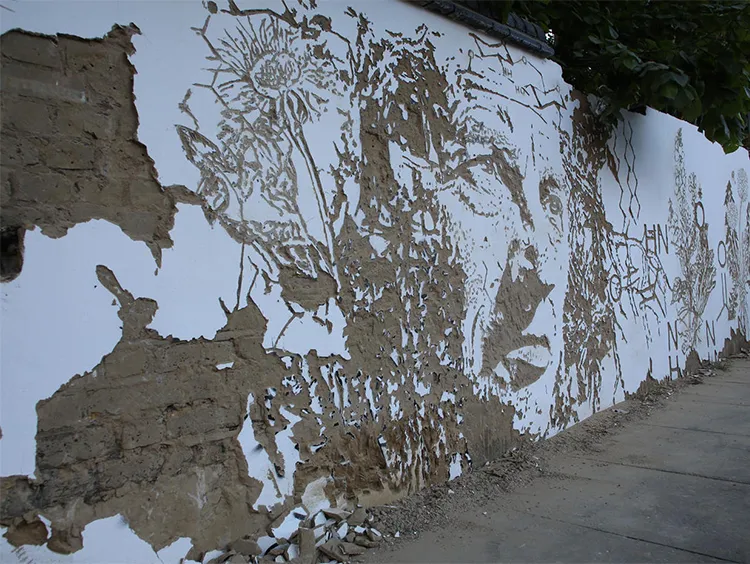
Alexandre Farto: The Global Dialogue of Urban Art
Alexandre Farto’s art is deeply influenced by the locations in which it is created, each city offering a unique context that informs his work. From the favelas of Rio de Janeiro to the bustling streets of Hong Kong, Farto immerses himself in the local culture, history, and rhythm of the places he works in. This approach allows him to create pieces that resonate not only with the physical environment but also with the social and cultural narratives that define each location.
Farto’s process begins with extensive research and community engagement, ensuring that his work reflects the layers of history and identity inherent in each place. For example, in Portugal, he has incorporated traditional azulejos into his work, connecting with the country’s rich cultural heritage while addressing contemporary issues. In other cities, Farto draws on different materials and motifs that hold significance to the local identity, creating a dialogue between his art and its surroundings.
Looking forward, Farto is excited about new projects that continue to explore the relationship between urban environments and human identity. One such project is his involvement in the Grand Paris Express, where he is creating a large tile mural in a metro station. This project not only continues his exploration of urban spaces but also represents a fusion of traditional techniques with contemporary themes. As Farto’s work continues to evolve, his commitment to engaging with the layers of our world remains steadfast, promising to uncover even more stories from the urban landscapes that inspire him.
